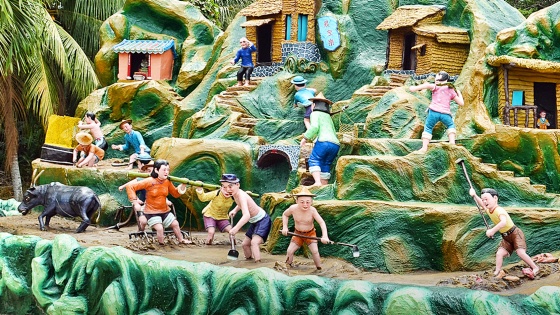Haw Par Villa
Haw Par Villa
Blog Article

Overview
Haw Par Villa, also referred to as Tiger Balm Gardens, is undoubtedly an iconic concept park located in Singapore. This unique attraction presents site visitors a glimpse into Chinese mythology and folklore through its stunning and intricate statues, dioramas, and displays. Let's just take a better look at the essential features of this fascinating place.
History:
Haw Par Villa was originally crafted by Aw Boon Haw, the magnate behind the renowned Tiger Balm ointment. The park opened its doors in 1937 as a method to both of those entertain and educate individuals about classic Chinese values, heritage, and beliefs. Through the many years, it has undergone numerous renovations but has managed to retain its unique appeal.
Mythological Figures:
Among the list of most important highlights of Haw Par Villa is its vast collection of statues depicting people from Chinese mythology and legends. Readers will come upon figures like Journey to your West's Sunshine Wukong (the Monkey King), Eight Immortals from Daoism, as well as important deities which include Guanyin (Goddess of Mercy) and Buddha Shakyamuni.
Concept Parks in Haw Par Villa:
Inside of Haw Par Villa itself are many unique locations or sections:
10 Courts of Hell: Probably The most intriguing elements of Haw Par Villa is Checking out "The Ten Courts of Hell." Here readers can witness graphic scenes depicting punishments for a variety of sins depending on conventional Chinese beliefs about afterlife retributions.
Taoist-Mythology Sculptures: This region showcases amazing sculptures depicting stories from historical Taoist myths. These vibrant artworks provide to everyday living tales which were passed down via generations in vivid detail.
Back garden Sceneries: Outside of mythological sculptures lie serene gardens full of picturesque landscapes adorned with beautiful bouquets and plants—a great Room for visitors to take it easy amidst nature's natural beauty or get pleasure from a casual stroll.
Teochew Opera Centre: The Teochew Opera Centre is a conventional theater location that routinely hosts performances of your Teochew opera, a major method of Chinese musical drama with unique regional properties in its costumes, songs, and storytelling.
Cultural Importance:
Haw Par Villa retains huge cultural significance as it provides a chance to take a look at different areas of Chinese society, folklore, and religious beliefs. It serves as equally an open up-air museum along with a place for communal pursuits like festivals or instructional applications enabling website visitors to realize insights into historic Chinese traditions.
Furthermore, the park's unique intention was to teach website visitors about ethical values as a result of vivid depictions of heaven and hell – rewarding virtue and condemning vices. Therefore Haw Par Villa acts as not just an amusement park but in addition a moral information instructing critical ethical concepts from conventional Chinese philosophy.
Up to date Relevance:
Even with currently being created a long time in the past, Haw Par Villa proceeds to catch the attention of locals and tourists alike because of its uniqueness and timeless appeal. The park has managed to Mix tradition with present-day things by organizing events which include art exhibitions, lantern festivals in the course of mid-autumn celebrations showcasing the fusion in between modern aesthetics and typical themes affiliated with the villa.
In recent times, there happen to be endeavours by authorities to refurbish areas of the attraction whilst guaranteeing its historical authenticity. This ongoing servicing makes certain that Haw Par Villa stays obtainable for generations to come even though preserving its rich heritage worth.
Summary:
Haw Par Villa stands out among Singapore's points of interest for its immersive experience into legendary realms through intricately-intended sculptures depicting deities, legends, morality tales and punishments in Taoist mythology-inspired gardenscapes - all in a reflective ecosystem emphasizing existence lessons dependant on compassion shown in direction of others because it conveys ancient wisdom guided by moral principles conducive for self-improvement located amidst lovely scenic landscapes making it acceptable each for cultural exploration fanatics keen on China's broad mythology/history/backgrounds/legends simultaneously(proporotinately with due rverence in the direction of central concept of representing get more info classic Chinese tradition and beliefs).